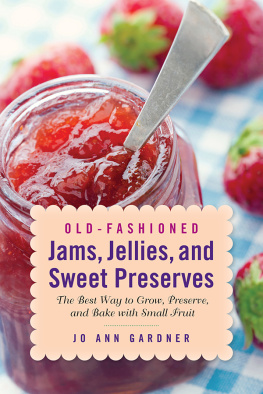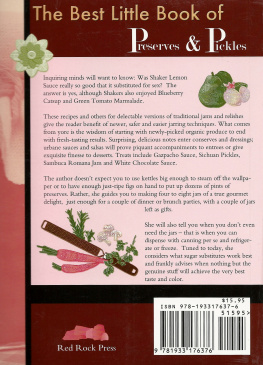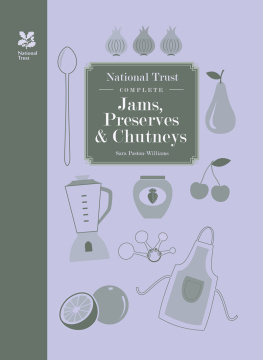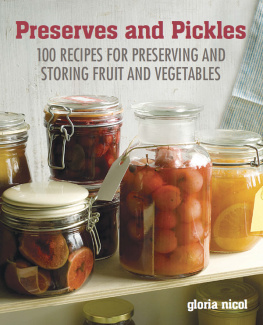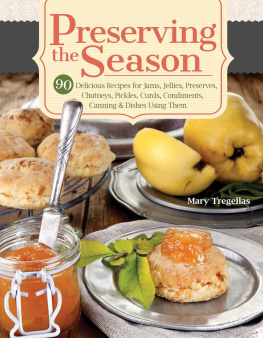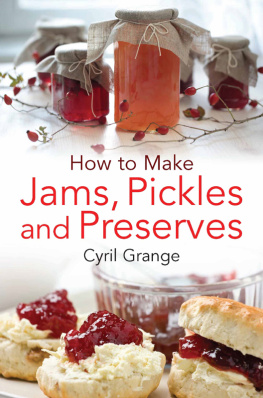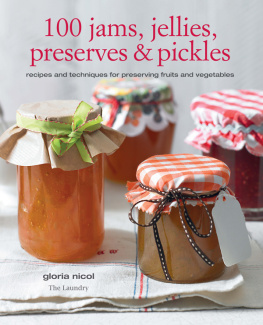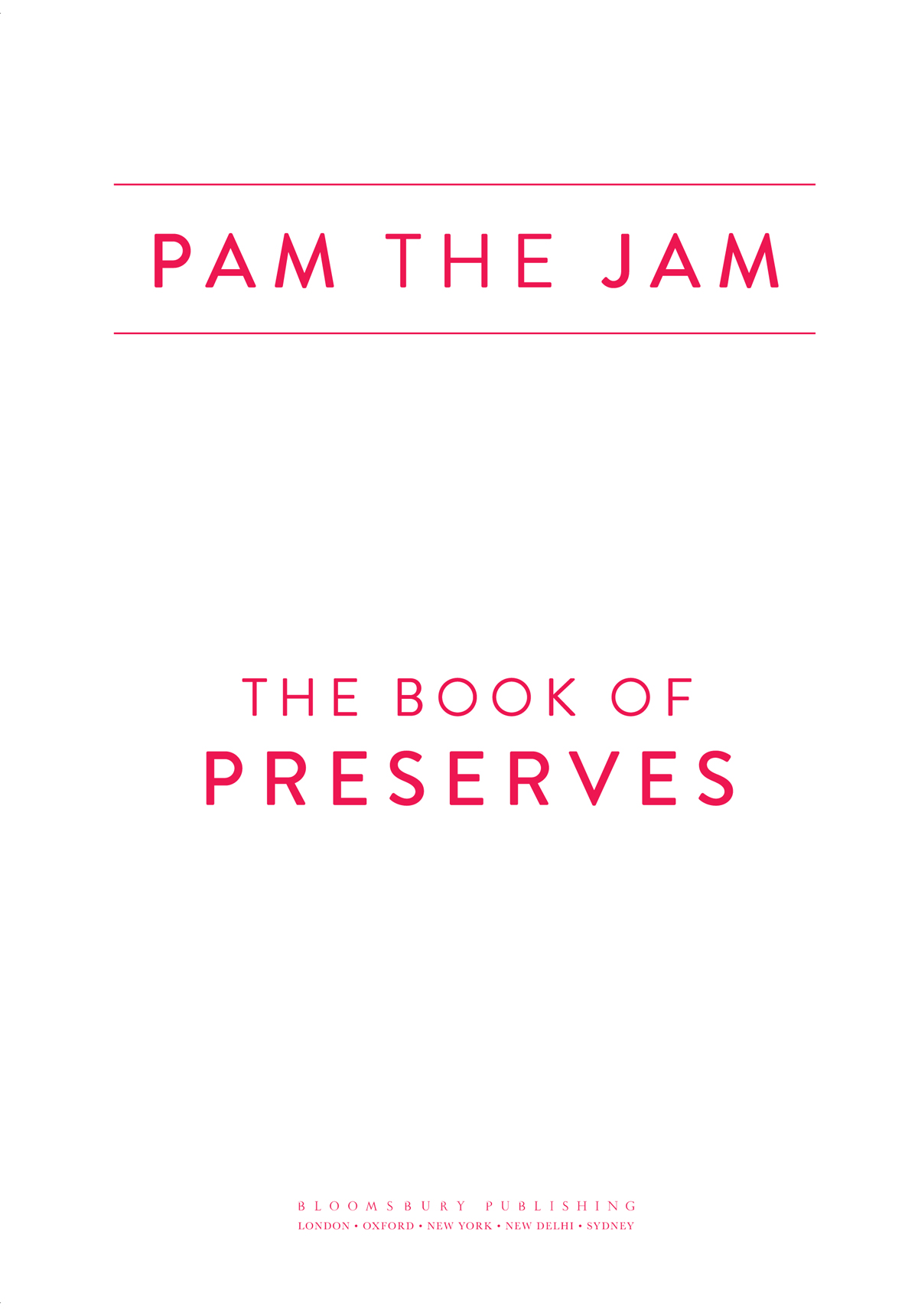
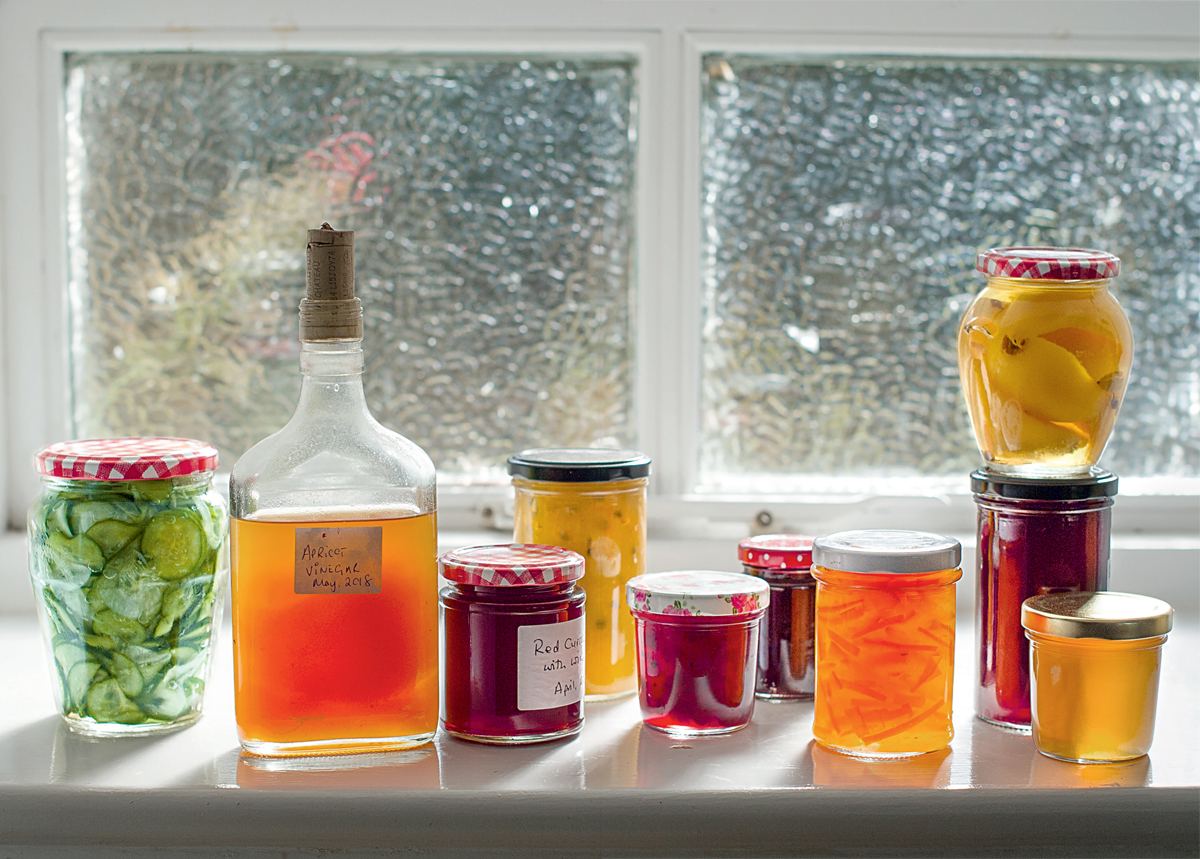
Contents
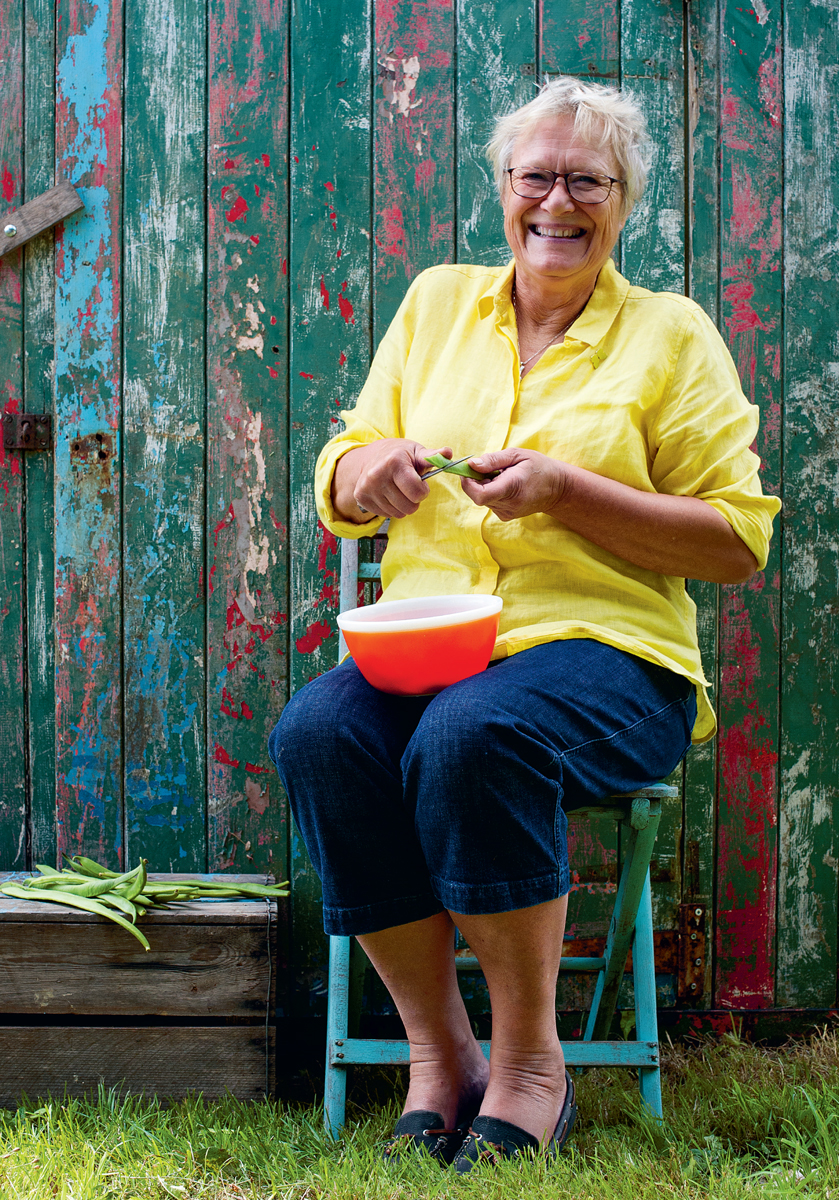
A PRESERVERS LIFE
My vocation was decided the moment my parents named me: Pam rhymes so very well with jam. As a youngster, I loved being in the kitchen with Mum, helping to spoon cake mixes into tins and leaving just a bit too much in the bowl so it had to be scraped and licked off the spoon. Domestic Science was my favourite school subject in teenage years and I carried the ingredients into class in a wicker basket covered with a floral plastic cover the sort used to line the base of budgerigar cages. Sometimes my cookery efforts would arrive home in one piece; others looked as if a mouse had been at them, as Mum used to say. In those days we were taught how to cook the basics: cakes, scones, pastry, how to boil an egg; and, of course, how to make jam. I loved it all and passed the exam with top marks.
But my actual career in jam making began much later. Married and with two young daughters, Philippa and Maddy, Hugh and I upped sticks from a secure Home Counties life and headed west. Crazy, crazy our friends said, as we converted part of an old pig farm in Dorset into our Jammery. We had bought Thursday Cottage, a small preserve-making business that specialised in marmalade, jam and fruit curd. Part of the deal was that we had to move it from its well-established premises to a new place. This wasnt easy. Land was selling at sky-high prices for housing too costly for anything large and industrial, or an artisanal jam kitchen without economies of scale. In the end, we found a unit, still full of snuffling pigs, on a farm near Lyme Regis and took the plunge; having bought and refurbished it, we relocated the business. Sometimes I look back with amazement at the apparent ease with which we changed our lives, yet somehow at the time it simply felt like the right thing to do.
I had made jam and marmalade before, but now it was one, two, three thousand jars a day; this was completely different from stocking the larder for the family. With a small team of inexperienced but enthusiastic employees, it really was in at the deep end as we grasped our wooden spoons with a fiery determination and learnt about jars, lids and all things jammy, striving to make the best sweet preserves in the country.
I had never thought of myself as competitive, but when our preserves were included on a taste panel or entered into a food award I was only ever interested in the highest accolade; there was no point in bronze or silver if there was gold to be had! Thirteen years on, Thursday Cottage was awarded the Best Speciality Food Producer by The Guild of Fine Food in 2001 a remarkable achievement for a jam maker as this is normally considered to be a humble craft and we were very proud indeed.
Our preserves were now sold by top shops and independents throughout Britain, and indeed all over the world. We had many loyal followers and nothing would delight us more than hearing that a Thursday Cottage jar had been spotted on an isolated island or in some other remote spot. Yet we still made our products in the same small batches (1824 jars in each pan) that we always had done; the way we operated was an absolute testament to how efficient a small business can be.
A year or so after our award, we were approached by the renowned Essex preserve makers Wilkin & Sons, who were keen to acquire our brand. It was a difficult choice to sell the business, but the right one. It gives me great pleasure to know that Thursday Cottage lives on and its top-notch products are still made to their original recipes.
I hadnt expected the heartfelt wrench of selling the business, and for a while felt at a loss without the pans of bubbling jam and the equally bubbly chatter of the jam ladies. But as so often happens, as one door shuts, another one opens. Hugh Fearnley-Whittingstalls River Cottage was right on my doorstep, with its television series and books, and the many courses and events that emerged over the years. With Hughs infectious curiosity came a welcome renaissance of interest in growing, rearing, fishing and foraging for food; and a time of epiphany for the many who grabbed the opportunity to change their lifestyle and understand food from the ground up.
How to use and store produce was an inherent part of the ethos at River Cottage and I began teaching preserve making there, as well as writing a book for the River Cottage Handbook series. Few things give me greater pleasure than to share my experience and knowledge, or to hear how peoples everyday lives have been changed by learning these new skills.
These days, more and more people want to know the provenance of the food they buy. It may seem paradoxical to look back as a means of going forward, but the basic principles of preserving have hardly changed since the ancient Phoenicians of the Mediterranean left grapes in the sun to dry until their natural sugars were so concentrated that they wouldnt go off. Following a handful of simple rules, most preserving methods just require time and a few everyday ingredients.
Preserving is a rewarding step towards self-sufficiency. I happen to write this as the countryside has been brought to a halt by a spell of viciously harsh winter weather; despite having little chance of getting to the shops Ive still feasted like a queen, thanks to my preserves.
But of course preserving is about far more than self-sufficiency. It is about celebrating the fruit and vegetables that we and others have grown, capturing their flavour at its peak. Its also a way to save some money by pouncing on a glut and filling enough jars to share. When soft fruit is tight with juiciness, rhubarb stalks are crisply taut, carrots are bright and crunchy, and citrus fruits spray fragrance everywhere, that is the time to begin. By preserving these things, we bottle sunshine and then enjoy it, spoonful by spoonful, for many months to come.
HOW PRESERVING HAS CHANGED
A century ago, jam, jelly and marmalade would always be sticky-sweet with sugar. This was necessary to guarantee that the fruity berries of the sunshine months didnt decay, and also made sure that every jar of jam would set. To be penny-pinching with the sugar could mean bitter disappointment when the jar was finally opened.
Many of the jam recipes that you come across now still use equal quantities of fruit and sugar, and the sugar doubles to a ratio of 2:1 when it comes to marmalade. Sure, this easy and reliable ratio will make a well-set preserve that will keep, but these days you can make jam and marmalade with much less sugar. The jam recipes in this book contain a smaller proportion of sugar than the old-fashioned type so they wont keep for years and years but, quite honestly, who wants to have their cupboard full of the same sticky sweet jams for that long?
Todays preserve lovers are sometimes critical about the sweetness of much shop-bought jam and marmalade. In defence of the commercial producers, they have to adhere to Jam Regs set by the National Trading Standards Board, which require traditional jam or marmalade to contain more than 60 per cent sugar. This does include the natural sugars in the fruit, but its still a hefty amount.
In other words, the advantage of making jam at home is that you can make modern preserves that are not only less sweet but also pack in more flavour, because less sugar in the jar means more actual fruit instead.



